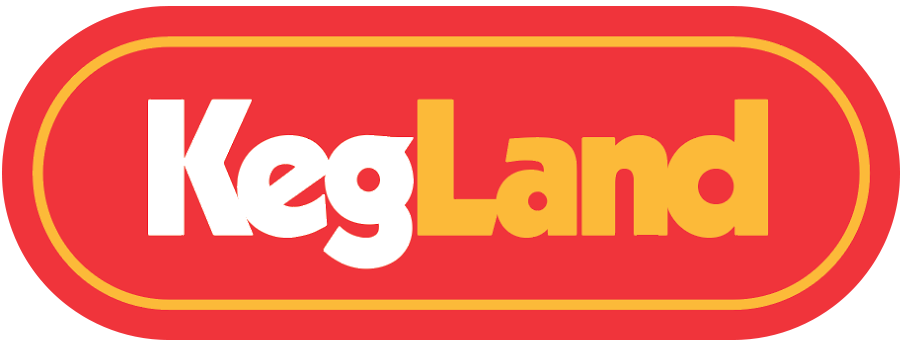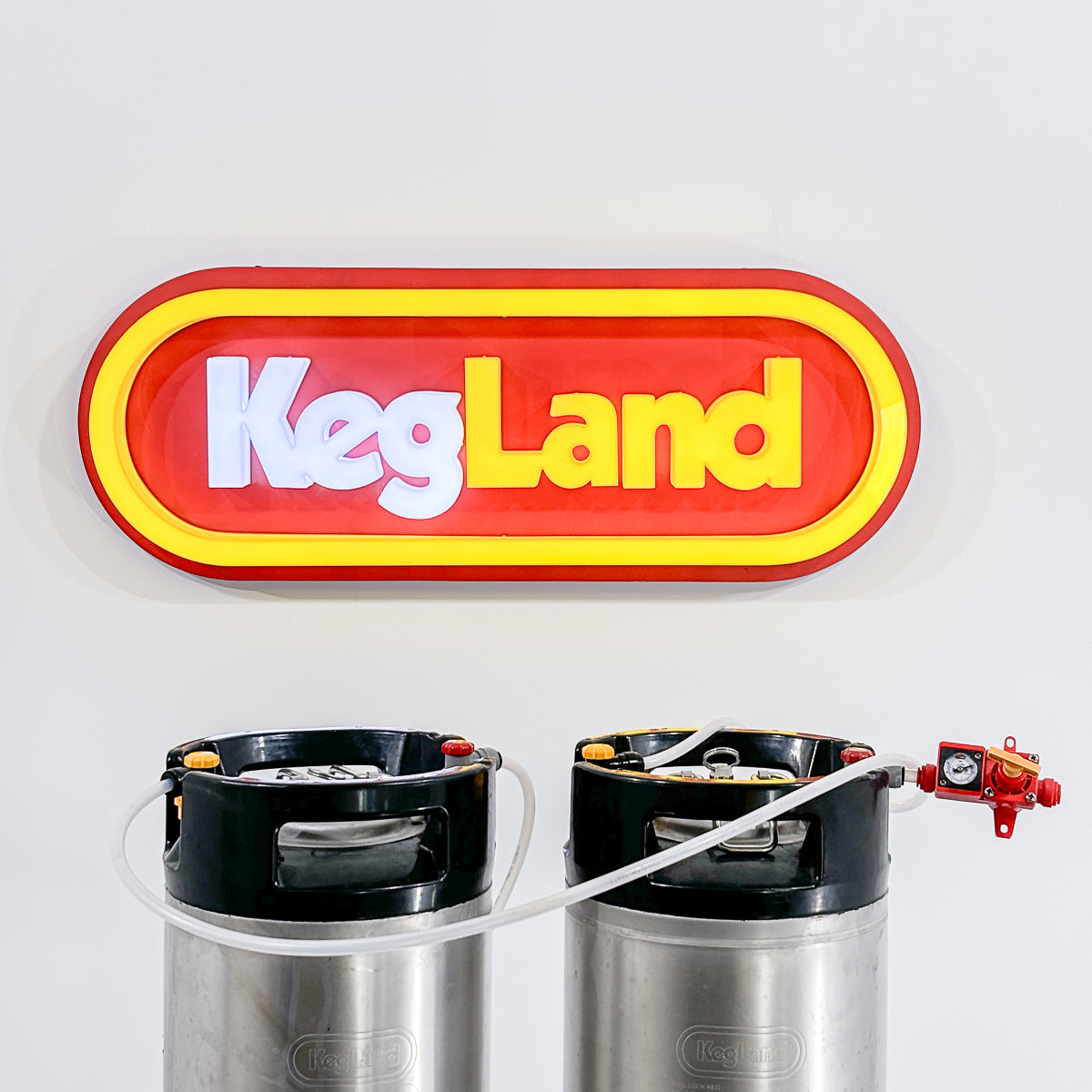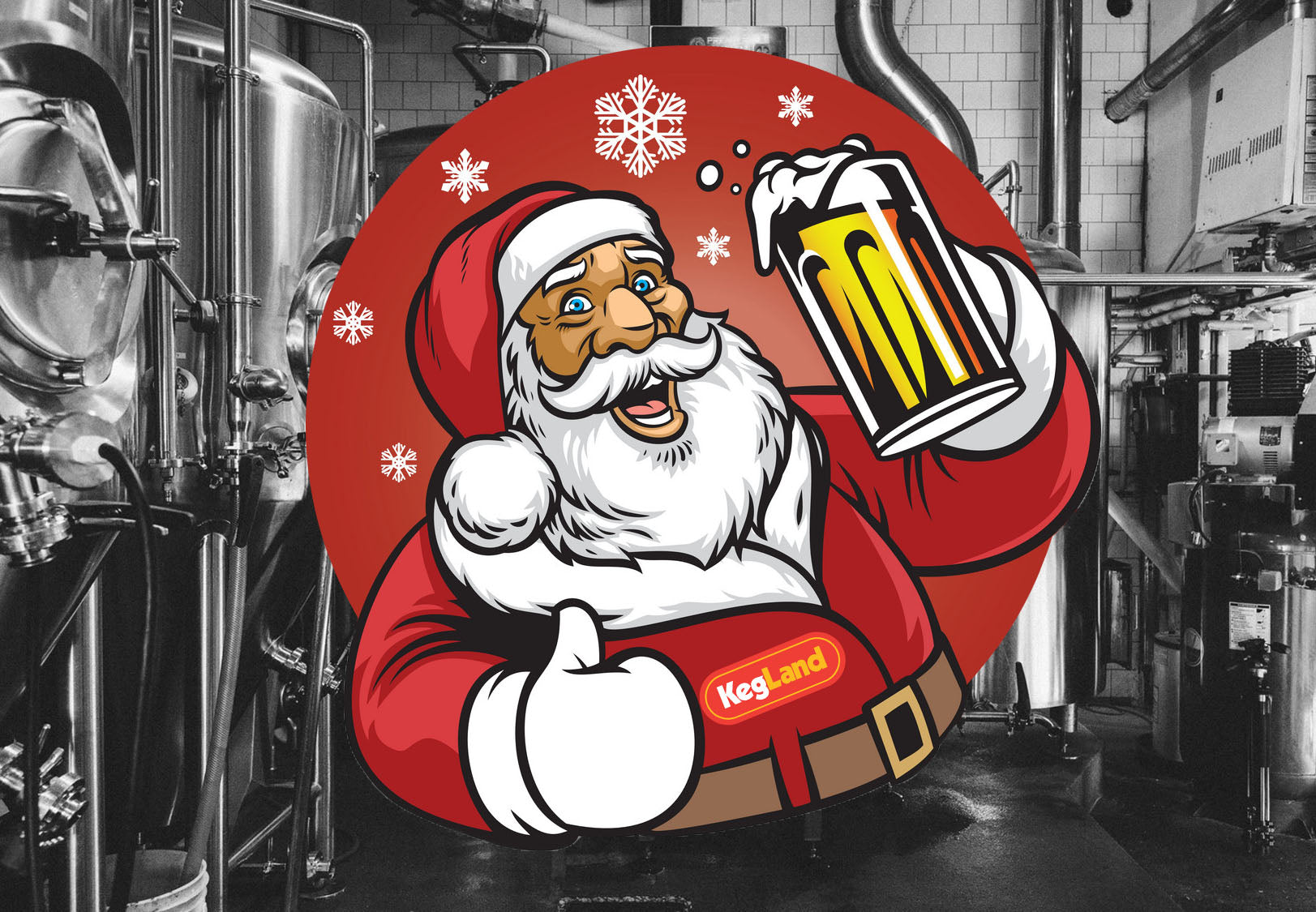There are many reasons to buy a kegerator.
You may be a homebrewer that is sick of bottling (we've all been there!). Perhaps you ar just starting your brewing journey but want to take advantage of kegging from the outset. Maybe you have done the numbers and would prefer to purchase 50L or 20L kegs of beer instead of buying slabs all the time!
Perhaps you want a cheap way of getting soda water on tap and can then also run a kegerator for beer or even cocktails!
Whatever the reason, we have a kegerator to suit your needs, but we realise that the choices can be pretty dauting, so let's break this down!
So, here are the top10 things you need to know before buying your first kegerator.
2: What's the difference between a homebrew kegerator and a commercial kegerator?
3: What size kegerator do I need?
5: How often should I clean my kegerator?
6: Do they come complete or do I need to build my kegerator?
7: I already have a fridge - can I turn that into a kegerator?
9: Where do I get the beer from?
What is a kegerator?
A kegerator is basically a fridge that is custom designed to hold kegs and maintain a set termperature. Normally outfitted with a font and taps so that cold, delicious beer can be directly dispensed.
What's the difference between a homebrew kegerator and a commercial kegerator?
Basically, there's no difference between a homebrew kegerator and a commercial kegerator apart from how the beer and gas lines are connected to the kegs. Where most homebrewers use 19L Corny Kegs, commercial (store or brewery purchased) beer usually comes in 50L or 20L commercial kegs. Homebrew kegs have seperate gas and liquid posts for CO2 and beer, whereas commercial kegs use couplers to which the beer and gas lines are connected. Apart from that, there is no real difference!
What size kegerator do I need?
This depends on how many kegs of what size you will be running. The Series X from KegLand is a great example of a 'standard' sized kegerator, capable of holding 1 x 50L keg or up to 4 x 19L Corny (homebrew) kegs. When people talk about a kegerator, this would typically be the size they have in mind.
However, there are other options! Unique to KegLand is the Series X Plus which can hold 2 x 50L kegs or up to 8x 19L Corny kegs, yet it is only 300mm wider than a standard kegerator!
Once you go beyond the sstandarddomestic kegerator form factor, you can move up to kegeraotars that do double duty as commercial models. These tend to be much larger and heavier, with correspondingly more cooling power, often at the expense of a bit more noise. The Grand Deluxe range is a great example of a commercial kegerator that can serve equally well in your man cave or in a commercial environment - its the ultimate upgrade!
Do I need CO2?
With a kegerator setup, there is no need for pumps or any of the more exotic equipment you may find in (for exmple) a pub with a long draw system. Its preetty simple - the kegerator smply keeps the beer cold and has taps mounted to it. The keg is hooked up to CO2 which maintains carbonation and also provides pressure via which the beer is dispensed. Any decent kegerator will have custom ports at the back or side to allow ingress for the CO2 lines, so that the CO2 cylinder can be stored external to the kegerator.
How often should I clean my kegerator?
Treat the interior and exterior of the kegerator as wyou would a domestic fridge. Regular cleaning with a damp microfibre cloth will go a long way towards upkeep. The beer lines should also be cleaned regularly. Absolutely the best practiec is to clean the beer lines every time you change the keg. That way, you don't need to keep track of how often you are cleaning the lines, and you can always be assured that the lines and taps are in good condition.
Cleaning the beer lines is remarkably easy - there are a couple of ways to do this. If you are running homebrew kegs then this little kit is ideal. If you are using commercial kegs then a washout keg is perfect - simply fill the washout keg with your cleaner (we use StellarClean PBW) and attach the coupler, then open the tap to flush out the lines.
Best practice is to follow up with StellarSan no rinse sanitiser after cleaning, to make sure evrything is clean and sanitised.
Do they come complete or do I need to build my kegerator?
This can be a tiny bit confusding, actuially. A kegerator is a fridge designed for dispensing kegs through taps. It also refers to just the fridge component - context is important. It is quite common to buy a kegerator kit (complete with lines, fittings, taps etc) and then have to assemble it yourself - this is how we operate as it allows many different configurations and also helps keep tour prices as low as possible. So, when shopping for a kegerator, ensure you are getting the full kit with taps and everything you need.
At KegLand, we keep this as easy as possible - check here for Homebrew Kegerator Kits, and here for Commercial Kegerator Kits. Order any of these, add a CO2 cylinder and you will be pouring beer off the tap in no time!
I already have a fridge - can I turn that into a kegerator?
Absolutely! As mentioned, a kegerator is a fridge that can hold a keg to which taps etc are mounted. If you have an unused fridge or even a freezer you can re-purpose, you can simply kit it outt yourself with taps (on shanks through the door or a font as desired), beer and gas lines, everything you need. This can be a fun and satisying project, and allowsyou to do more customisation than with a purpose bought kegerator. You may find that spending a little more to get a kegerator kit is worth it though - but the choice is yours.
Do they take up much room?
This depends on the size of the kegerator, of course, as well as making allowance for any cooling requirements. As kegerators are similar to but different than standard domestic fridges, these requirements can differ. For example, the cooling coils on a Series X kegerator are in the ides. This allows for great efficiency and fantastic cooling performance, but does mean we need at least 100mm clearance to each side of the kegerator. Typically this is not an issue at all - it's very common for kergators to be free standing, for example. If building into a cabinet, please make sure you check the specs first!
Where do I get the beer from?
Great question! There's plenty of places to buy kegs of beer in Australia. Check local breweries and bottleshops if you want to stay local, otherwise there are also online purveyors of kegs.
Of course, a great option is to brew your own beer! There's never been a better time to get into homebrewing. The rising costs of living coupled with the incredible availability of amazing brewing gear and ingredients means that home brewing is one of the best hobbies you can purse! (We may be a bit biased, of course). There's a lot to unpack here, but please have a good read of this article which breaks everything down.
If you still need to know more - call the service team - there's literally nothing we love more than helping someone discover the joy of homebrewing! If you want to jump straight into All Grain brewing (widely considered the creme de la creme of homebrewing) then have a read of this for a detailed guide on getting started.
Kegerator noise levels?
Kegerators are fridges, but they are not standard domestic fridges. Often they have greater cooling power - certainly the KegLand Series X uses r600a refrigerant as it is both electrically efficient and evironmentally friendly, for example. However, as kegerators and dometic fridges have differing purposes and designs, the refrigerant noise of a kegerator can be more noise than we get from (typically completely quiet) domestic fridges.
So that's it! Hopefully you have a pretty good idea of what buying a kegerator involves and what you need to know. At KegLand we are experts in the field, so if you have ay further questions please don't hesitate to get in touch so we can help!



